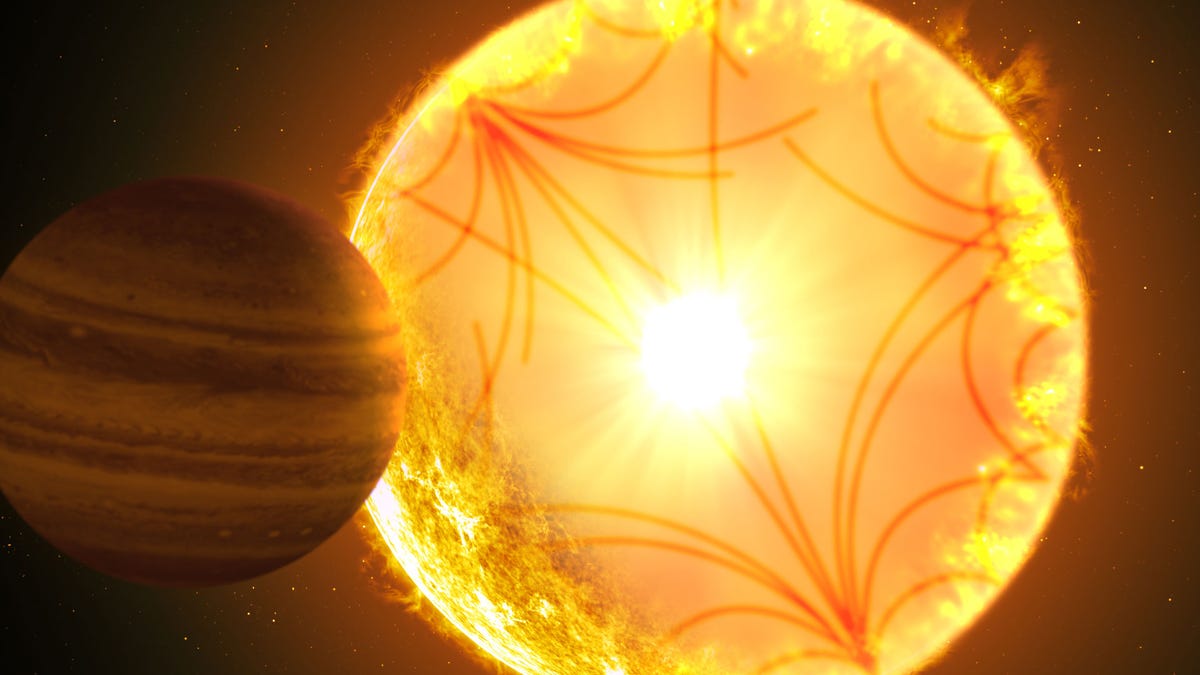First Planet Spotted By NASA's Kepler Telescope Is Doomed to Crash Into a Star
It took years to confirm the existence of Kepler-1658b. Now its days are numbered.

An artist's concept of the Kepler-1658 system. Kepler-1658b, orbiting with a period of just 3.85 days, was the first exoplanet candidate discovered by Kepler.
Astronomers say they've spotted a first: an exoplanet spiraling toward an older star in an extended demise that will eventually end with the planet's annihilation by cosmic collision.
The distant world was already famous in astronomical circles as the first exoplanet candidate spotted by NASA's Kepler Space Telescope, which discovered thousands of planets beyond our solar system over nearly a decade of looking.
Kepler-1658b was first identified in Kepler data in 2009, but it took a full decade before additional analysis officially confirmed its existence. Now it turns out the gigantic planet as massive as almost six Jupiters might have less time left than initially expected.
"We've previously detected evidence for exoplanets inspiraling toward their stars, but we have never before seen such a planet around an evolved star," said Shreyas Vissapragada, at the Harvard and Smithsonian Center for Astrophysics, in a statement. "Theory predicts that evolved stars are very effective at sapping energy from their planets' orbits, and now we can test those theories with observations."
Vissapragada is lead author of a new study on the finding published Monday in The Astrophysical Journal Letters.
It's probably no coincidence a gas giant planet orbiting close in to its star was the first exoplanet to be spotted by Kepler. Being so massive and near their home star makes these so-called "hot Jupiters" relatively easy to spot, kind of like a car in a haystack rather than a needle.
Kepler-1658b orbits closer to the star Kepler 1658 than Mercury does to our sun, completing a full circle of the star every 3.85 days. But researchers now say that orbital period is decreasing by 131 milliseconds every year, indicating the planet is moving closer to its star -- and to its own finale -- ever so slowly.
The researchers say this slow inspiraling is due to tidal, or gravitational, interactions between the two bodies. It appears Kepler-1658 has entered the later stages of its life in which it begins to expand outward, something that's also expected to happen to our own sun in a few billion years.
Vissapragada says the system provides an interesting real-world laboratory to study such complex dynamics.
"We can really start to refine our models of tidal physics," Vissapragada said. "With any luck, there will soon be many more of these labs."

